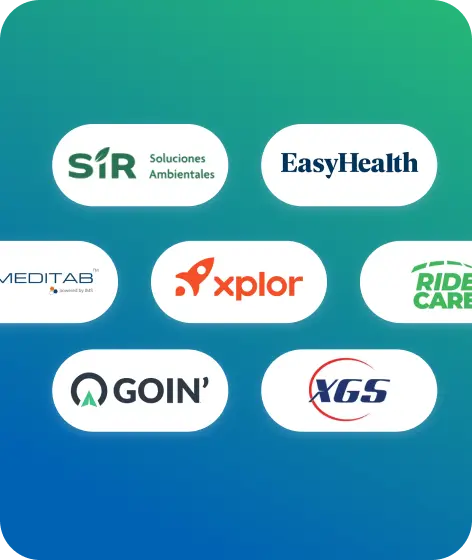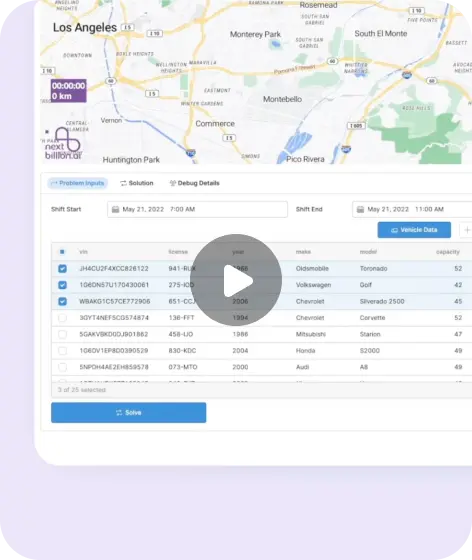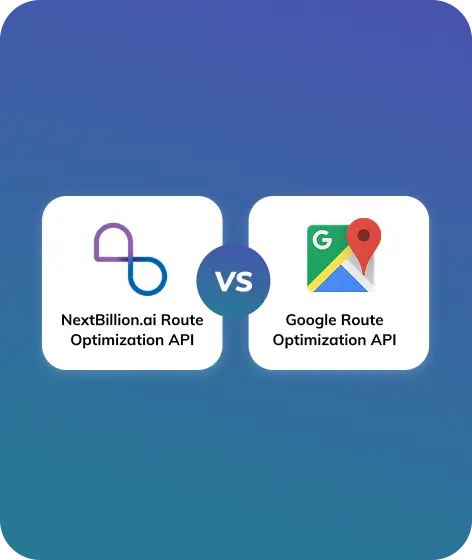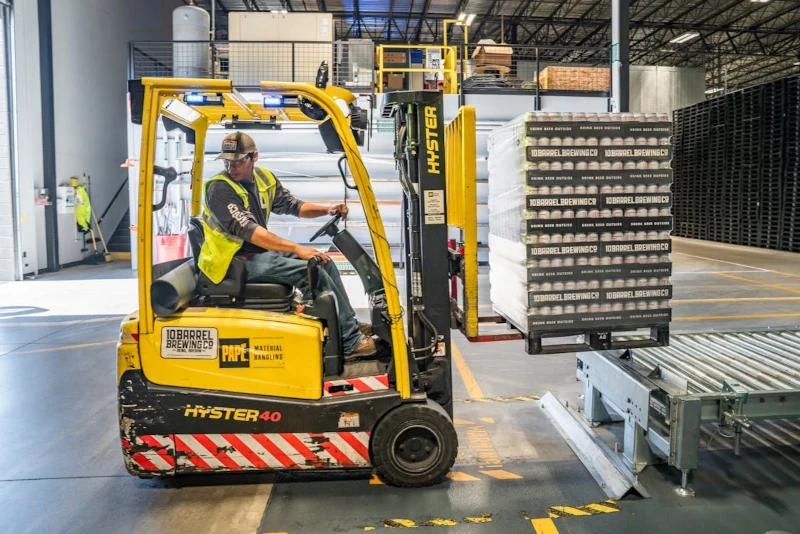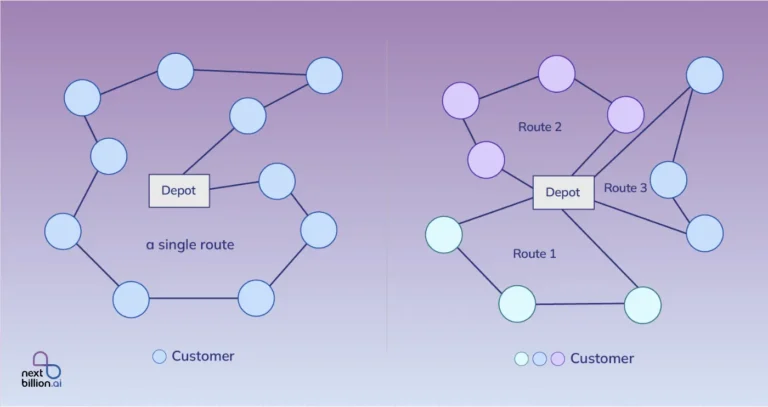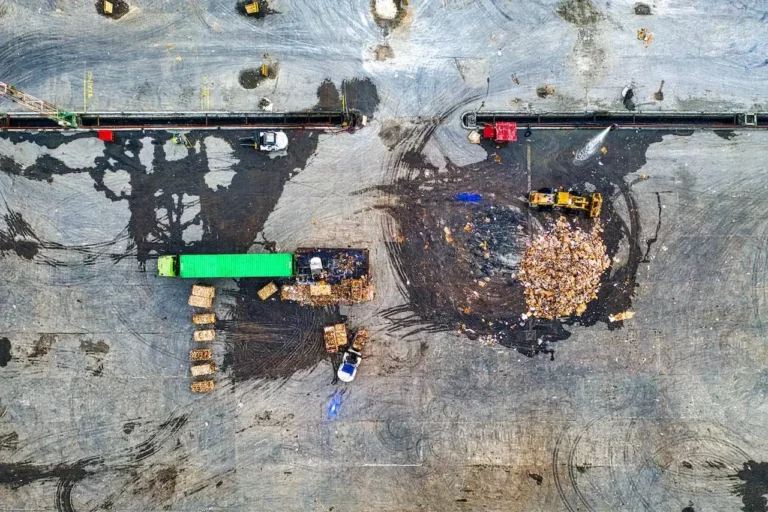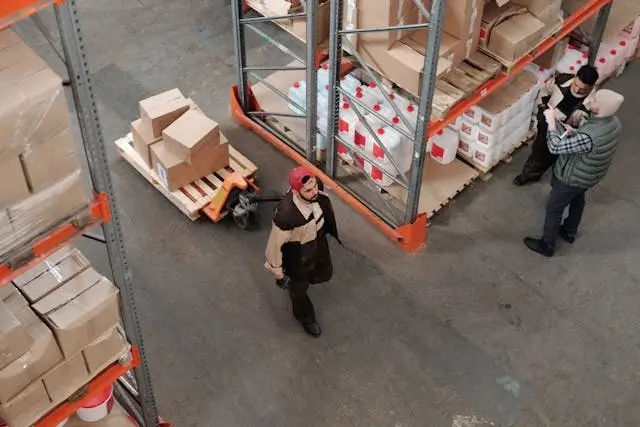
Table of Contents
The efficient movement of goods from producers to consumers in today’s fast-paced, customer-focused economy depends on the logistics industry. First Mile,” “Middle Mile,” and “Last Mile” refer to the route your product travels, whether you’re handling global supply chains, ordering groceries online, or receiving a shipment from an internet retailer. These three stages have different opportunities, challenges, and issues despite their similarities.
Let’s look at the meanings of these terms, their essential elements, and the difficulties they face in today’s fast-paced society.
What is First-Mile Logistics?
Transporting items from their point of origin, such as a manufacturer, supplier, or retailer’s warehouse, to a central hub, such as a distribution center or fulfillment facility, is known as first-mile logistics. The groundwork for later logistical procedures, such as middle-mile and last-mile delivery, is laid during this phase.
For downstream deliveries to be precise and on time, effective first-mile logistics are essential. At this point, mistakes or delays could have a cascading effect on the supply chain, resulting in higher expenses and unhappy customers.
First-mile logistics in e-commerce may entail gathering goods from many vendors and assembling them at a fulfillment center prior to delivery to the client.
All things considered, keeping a responsive and seamless supply chain depends on first-mile logistics optimization.
Key Components of First Mile Logistics:
1. Procurement and Coordination of Suppliers
Purchasing completed goods or raw materials from suppliers is the first mile. To guarantee that materials are accessible in the appropriate quantity and quality at the appropriate time, efficient supplier coordination is crucial. The supply chain as a whole may be disrupted by delays or misunderstandings at this point. The effectiveness of first mile logistics is greatly influenced by procurement tactics like bulk or just-in-time purchase.
2. Origin-to-Origin Transportation
Transporting commodities from their point of origin, such as a farm, factory, or port, to a processing center, warehouse, or distribution facility comes next after they are purchased. Several forms of transportation, such as trucks, trains, or ships, may be used for this segment. In addition to lowering total logistics costs and preventing bottlenecks, efficient first-mile transportation keeps the flow of goods moving forward to the next phase of the supply chain.
3. Labeling and Packaging
Goods must be appropriately labeled and packaged before being transported. This stage in first mile logistics makes sure that goods are safeguarded throughout transportation and can be quickly identified for inventory and tracking purposes. In addition to preventing damage and minimizing handling errors, proper packing guarantees adherence to industry or legal standards, particularly for commodities that are regulated, perishable, or fragile.
4. Records and Adherence
During the first mile, accurate documentation is crucial, especially when products are traveling across national or regional borders. Purchase orders, bills of lading, invoices, and customs documentation are all included in this. At this point, ensuring regulatory compliance helps prevent cargo rejections, fines, and delays. To retain real-time visibility into shipping status and expedite documentation, many organizations adopt digital solutions.
5. Visibility and Inventory Management
Systems for inventory management and real-time tracking make it easier to keep an eye on the flow of goods from the supplier to the first warehouse or processing location. Businesses may minimize waste or overstocking, improve storage, and make well-informed decisions by having visibility into inventory levels and shipping status during the first mile. The basis for efficiency across the remainder of the supply chain is established by this visibility.
6. Quality Control and Inspection
A key component of first mile logistics is inspecting goods at the point of origin or when they arrive at the warehouse. Quality control makes sure that products fulfill standards before they move on to later phases of the supply chain. By spotting flaws or problems early on, it helps avoid problems later on, lowers returns, and preserves customer satisfaction.
7. Integration of Technology
The effectiveness of first mile logistics is increased by digital solutions including mobile applications, transportation management systems (TMS), and supply chain management software. These technologies give data for forecasting and analysis, automate procedures, and enable real-time communication. When these technologies are properly integrated, activities are visible, flexible, and scalable.
Barriers in First Mile Logistics
1. Ineffective Coordination with Suppliers
The absence of smooth coordination between suppliers and manufacturers or distribution hubs is one of the main issues in first mile logistics. Inaccurate orders, erratic lead times, and supplier communication delays can all cause supply chain disruptions. Managing several suppliers without established methods frequently leads to misunderstandings, delayed shipments, and decreased production.
2. Inconsistent Infrastructure for Transportation
The efficiency of the first mile can be significantly impacted by poor transportation infrastructure in many places, particularly in rural or developing areas. The timely and secure transportation of goods from their point of origin is hampered by poor road conditions, a lack of multimodal transport choices, and restricted access to dependable freight services. Longer delivery delays and more transportation expenses are the results of these limitations.
3. Insufficient Tracking and Visibility
During the first mile, visibility is essential, yet many businesses struggle with antiquated or inadequate tracking systems. It becomes challenging to predict delays or efficiently manage inventories without real-time data on the movement and condition of commodities. The danger of stockouts, overstocking, and interruptions in the downstream logistics flow are all increased by this lack of awareness.
4. Regulatory Compliance and Documentation Errors
Purchase orders, invoices, transit permits, and customs declarations are just a few of the many documents that are frequently involved in the first mile. Missing or inaccurate information may result in fines, delays at customs, or shipping holds. Many businesses are ill-prepared to handle the additional layer of complexity that comes with adhering to national and international standards, particularly when shipping across international borders.
5. Problems with Packaging and Handling
Particularly for perishable or fragile goods, improper packaging at the source may cause harm during transit. In addition to raising the possibility of product loss, improper labeling, improper handling, or noncompliance with industry-specific packaging regulations also increase the cost of returns, replacements, and unhappy customers.
6. Inconsistent Lead Times
First-mile lead times can vary greatly depending on a number of factors, including seasonal demand swings, shipping delays, and supplier manufacturing schedules. Businesses frequently experience inefficiencies and higher expenses as a result of this unpredictability, which makes it challenging to manage inventory levels, develop correct plans, and satisfy consumer expectations.
7. Inadequate Technology Use
A large number of first-mile small and mid-sized enterprises continue to use disjointed legacy systems or manual procedures. Their capacity to scale efficiently, react swiftly to problems, and optimize operations is hampered by the absence of automation and digital technologies. Tracking, predicting, and coordination continue to be key problems in the absence of modern technologies.
8. Gaps in Quality Control
It is crucial to carry out comprehensive quality checks at the point of origin, yet many businesses struggle because they lack standardized inspection procedures or qualified staff. Early detection of flaws or irregularities can prevent rejections later in the supply chain, which can impact schedules and raise operating expenses.
What is Middle Mile Logistics?

Moving product from one warehouse, fulfillment center, or distribution center to another is known as “middle-mile logistics” in the context of e-commerce supply chains.
Based on consumer demand, businesses can optimize inventory levels in specific areas by relocating and spreading goods among several carefully positioned facilities. Businesses can scale more effectively as a result of the shorter shipment times and lower prices. You may easily and economically transfer goods to establish a more flexible supply chain if you have access to numerous warehouse locations.
Key Components of Middle Mile Logistics
Middle mile logistics acts as the bridge between suppliers and last-mile distribution. Efficient management of this stage can greatly reduce delivery times, optimize transportation costs, and improve overall supply chain performance. Below is a comprehensive breakdown of its essential components:
1. Networks of Transportation
Middle mile logistics relies on a well-organized transportation system. This comprises the fleet of trucks, vans, or rail services used to transport goods from ports or production facilities to local warehouses or distribution hubs. How fast and cheaply goods may travel through the supply chain depends on the effectiveness and capacity of this network.
The performance of this component is significantly impacted by factors such as vehicle usage, route optimization, and multimodal transportation alternatives.
2. Distribution Centers and Warehousing
Distribution centers are important hubs for receiving, sorting, and temporarily storing goods before they are sent to retail locations or final delivery points. Good warehousing makes sure that inventory is properly tracked, stored, and easily accessible. The location, capacity, and technological capabilities of these facilities have a significant impact on the middle mile process’s speed and flexibility.
3. Management of Inventory
Another important component of the middle mile is inventory control. It entails monitoring, transferring, and optimizing inventory between the stages of manufacture and retail. Intelligent inventory management systems facilitate just-in-time delivery models, avoid stockouts or overstocking, and help maintain precise stock levels.
Inventory management facilitates improved planning and responsiveness to market demands when combined with demand forecasting technologies.
4. Planning the Route and Load
The most economical and efficient way to carry goods is ensured by careful route and load planning. This entails determining the optimal routes by taking into account variables such as delivery schedules, fuel efficiency, traffic conditions, and distance. In contrast, load planning makes sure that vehicles are balanced and used to their best potential in order to cut down on trips and boost efficiency.
AI and real-time data are frequently used by sophisticated software solutions to improve decision-making in this field.
5. Fleet and Carrier Management
Another essential element is running an internal fleet or managing connections with transportation providers. This includes contract administration, fleet maintenance, driver scheduling, carrier selection, and performance monitoring. Effective fleet management lowers operating expenses, guarantees adherence to safety and environmental standards, and maintains on-time delivery.
6. Automation and Technology
Automation and digital tools are becoming more and more important in middle mile logistics. Technologies that increase visibility, efficiency, and accuracy include RFID, GPS tracking, Transportation Management Systems (TMS), Warehouse Management Systems (WMS), and Internet of Things devices. Automation speeds up turnaround times at distribution centers and lowers manual mistake rates in sorting, loading, and documentation procedures.
7. Visibility and Data Analytics
The transparency required to track and improve middle mile operations is provided by real-time data and analytics. Businesses may forecast demand, find bottlenecks, and take preemptive measures by utilizing dashboards, reporting tools, and predictive analytics. Along the supply chain, improved visibility into shipment status, vehicle performance, and inventory levels allows for more informed decision-making and increased agility.
8. Management of Compliance and Risk
It is crucial to make sure that laws pertaining to safety, driver hours, emissions, and transportation permits are followed. Planning for unforeseen events like car breakdowns, bad weather, or supply chain delays is another aspect of risk management. In order to ensure consistent and legal operations, this component frequently includes audits, safety inspections, and digital compliance tracking systems.
9. Cooperation and Interaction
For the middle mile to succeed, manufacturers, transporters, warehouse employees, and merchants must work together seamlessly. Stakeholders can exchange updates, promptly address problems, and align schedules with the use of efficient communication tools and integrated platforms. Everyone in the supply chain is kept informed and in sync thanks to common dashboards and collaboration tools.
Barriers of Middle Mile Logistics
1. Complicated Scheduling and Routing
Route planning is a challenging task since middle mile logistics frequently entails carrying items across large geographic areas with numerous stops. Routing inefficiencies brought on by antiquated planning software or erratic road conditions can result in higher fuel consumption, delays, and underuse of available vehicle capacity.
Logistics companies find it difficult to efficiently optimize these routes without real-time data and dynamic scheduling technologies, which eventually raises operating expenses.
2. Insufficient Tracking and Visibility
The absence of real-time cargo visibility is one of the major problems with middle mile logistics. Logistics managers find it challenging to respond to disruptions, update stakeholders, and make well-informed choices when they are unable to precisely track the location of items while they are in transit.
Lack of investment in IoT devices, GPS tracking technology, or centralized control systems that can continuously monitor shipments across regions is frequently the cause of this visibility gap.
3. Ineffective Use of Resources
The underutilization of resources like cars, storage space, and labor is a problem for many logistics companies. Higher costs per shipment and a greater environmental effect are the results of underloaded transport vehicles and underutilized warehouses.
Static load planning procedures, poor coordination among supply chain nodes, and insufficient demand forecasts are usually the causes of this inefficiency.
4. Expense Control
Rising fuel prices, labor costs, tolls, and equipment maintenance all make middle mile logistics an expensive undertaking. These expenses have a direct impact on supply chain profitability and may compel companies to increase prices or take other cost-cutting measures.
This difficulty is largely caused by the use of inflexible transportation models that are slow to adapt to changes in the market, such as shifting fuel prices or driver availability.
5. Disjointed Carrier Systems
Many companies contract with third-party carriers to handle their middle-mile logistics, and these carriers may have distinct procedures, systems, and service requirements. This lack of standards creates disjointed networks with poor integration, delayed communication, and low visibility.
Coordination between these various systems represents a major operational challenge in the absence of a uniform logistics platform or efficient API interfaces.
6. Regulatory and Compliance Obstacles
In middle mile logistics, navigating the regulatory environment is another difficulty. Rules pertaining to environmental regulations, vehicle safety standards, and driver working hours differ between states and nations.
Delivery delays, fines, or vehicle impoundments may follow noncompliance. Many organizations suffer here due to a lack of automated compliance solutions and the complexity of keeping up with ever-changing legal requirements.
7. Lack of Workers
The logistics industry is experiencing a rising manpower crisis, particularly in middle-mile operations that rely on seasoned drivers and warehouse employees. Slower travel times, higher overtime expenses, and more employee turnover are all consequences of this labor imbalance.
An aging workforce and the sluggish adoption of automation worsen the problem, making it challenging for logistics firms to grow efficiently.
8. Limited Digital Change
Many middle mile businesses continue to rely on manual procedures or outdated technology in spite of technological improvements. The agility of supply chain operations is hampered by these antiquated technologies, which also make it challenging to adjust to interruptions like weather, traffic, or supplier delays.
Budgetary limitations, a lack of digital expertise, or organizational resistance to change are frequently the causes of the slow pace of digital transformation.
9. Unbalanced Inventory
In middle mile logistics, improper inventory distribution along the supply chain is a prevalent issue. Inappropriate storage placement might result in surplus in low-demand areas or stockouts in high-demand ones. Inaccurate forecasting and inadequate integration between the logistics, warehouse, and sales systems are usually the causes of these imbalances.
This raises carrying expenses in addition to delaying fulfillment.
10. Pressure for Sustainability
Businesses are under pressure to improve the sustainability of their logistics operations as environmental impact and climate change become more widely recognized. This entails upgrading to low-impact facilities, purchasing fuel-efficient cars, and streamlining routes to reduce emissions in the middle mile. However, the lack of defined industry-wide sustainability standards, hefty upfront costs, and regulatory uncertainty are slowing the shift to greener operations.
What is Last Mile Logistics?
The last mile of delivery is when products are delivered from a warehouse or distribution center to the doorstep of the ultimate consumer. Because it has a direct impact on customer satisfaction, this step of the supply chain is regarded as the most important and difficult. Last mile delivery is complicated and expensive since it sometimes entails little supplies traveling to several individual addresses, in contrast to bulk shipping in previous stages.
Customers now anticipate faster and more accurate deliveries due to the explosive growth of eCommerce, which puts pressure on logistics providers to increase speed, accuracy, and efficiency. This phase usually entails negotiating traffic, managing several delivery stops, and resolving problems such as unsuccessful deliveries or return requests.
Even though last mile logistics is the shortest segment of the supply chain, it accounts for a sizable portion of total expenses and is crucial in determining how customers view the brand.
Key Factors of Last Mile Logistics
1. Speed of Delivery
One of the most important aspects of last-mile logistics is speed. Businesses are under pressure to reduce delivery windows due to the growing demand for same-day or next-day delivery. This can be accomplished by placing distribution facilities strategically in locations with high demand, using sophisticated route planning, and implementing effective handling systems.
Delays at this point can have a detrimental effect on client satisfaction and result in lost revenue, particularly in fiercely competitive industries like food delivery and eCommerce.
2. Optimization of Routes
In order to guarantee on-time delivery and reduce operating expenses, efficient routing is crucial. Road closures, weather, and traffic congestion make last-mile trips frequently uncertain. To identify the most effective delivery routes, businesses utilize route optimization software that takes into account real-time data. In addition to lowering delivery times, optimized routes also save labor hours and fuel consumption, which raises total cost-effectiveness.
3. Communication and Visibility with Customers
One of the main factors influencing client happiness is keeping them updated during the delivery process. Delivery time estimates, SMS warnings, and real-time tracking all contribute to lowering uncertainty and fostering confidence. Additionally, providing various delivery options, such as preferred locations or time windows, improves customer satisfaction and lowers the likelihood of unsuccessful deliveries.
4. Costs of Delivery
The most costly aspect of the supply chain is last mile logistics, which frequently accounts for over 50% of all transportation expenses. Fuel, labor, truck upkeep, and the difficulty of delivery to several different addresses are the main causes of these costs. Reducing these expenses necessitates striking a balance between operational effectiveness and service quality, frequently through technology adoption and alliances with outside logistics companies.
5. Automation and Technology
In today’s last mile logistics, cutting-edge technologies like GPS, smartphone apps, delivery management systems, and AI-driven analytics are essential. These solutions enable businesses to automate dispatching, track delivery in real time, and collect data to continuously enhance customer experience. Sorting, packaging, and even delivery (using drones or self-driving cars) are increasingly being automated to boost efficiency and lower human error.
6. Management of Returns (Reverse Logistics)
Effectively managing returns is an essential component of last-mile logistics, particularly in industries with high return rates like electronics and apparel. A simple, easy return procedure increases client loyalty and trust. Reverse logistics must be properly planned by businesses to save additional expenses and delivery schedule interruptions.
7. Workforce and Infrastructure for Delivery
The efficiency of last mile operations is directly impacted by the availability of trustworthy delivery drivers and well-kept cars. While extensive travel distances can be difficult in rural places, delivery personnel frequently encounter parking problems, building access limitations, or heavy traffic in metropolitan areas. For reliable performance, a strong distribution network with the right tools and training must be established.
8. Sustainability of the Environment
The need to make last-mile deliveries more ecologically friendly is intensifying. To lessen their carbon footprint, businesses are implementing consolidated delivery strategies, bicycle couriers, and electric cars. In addition to promoting environmental objectives, sustainable business practices also attract environmentally sensitive customers.
Barriers of Last Mile Logistics
1. Expensive delivery fees
The high expense of shipping goods to specific consumer locations is one of the main obstacles in last mile logistics. Compared to earlier supply chain stages, this phase usually entails more stops, smaller drop sizes, and longer service durations per delivery.
The last mile is the most costly aspect of the entire logistics process because of the rapid accumulation of fuel expenditures, worker compensation, vehicle maintenance, and handling charges. It is challenging to cover these expenses, particularly when customers anticipate free or inexpensive shipping.
2. Urban Limitations and Traffic Jams
Deliveries might be considerably delayed when navigating through crowded city streets and small roads. Drivers frequently encounter challenges in urban settings, such as limited parking, restricted delivery hours, and problems with building access. These elements increase the logistical load and general inefficiency by slowing down operations and increasing the risk of fines or unsuccessful delivery.
3. Missed or unsuccessful deliveries
In last mile logistics, unsuccessful delivery attempts—when a consumer is unavailable to accept the package—occur frequently. These circumstances lead to more journeys, more fuel usage, and dissatisfied customers. Additionally, they make it more difficult to handle refunds or reschedule delivery, which costs businesses money and resources.
4. Absence of Visibility in Real Time
Many logistics companies find it difficult to give their workers and clients precise, up-to-date tracking information. Confusion, delays in problem solutions, and a decline in consumer trust can result from not knowing the precise location and status of a delivery. Effective delivery management becomes challenging in the absence of sophisticated tracking tools and cross-platform integration.
5. The ability to scale In High Seasons
Holiday seasons, significant sales occasions, and pandemics are times when demand for last-mile delivery services is at its highest. It’s always difficult to scale operations fast enough to meet the spike in demand without sacrificing service quality.
Inadequate infrastructure, a lack of workers, and limited resources frequently make it challenging to effectively satisfy these peak demands.
6. Expectations and Preferences of Customers
Customers of today demand delivery services that are quick, adaptable, and extremely customized. Complexity is increased when expectations are met, such as same-day delivery, specified time windows, or delivery to lockers or other locations. Particularly in cutthroat markets like eCommerce, a brand’s reputation might suffer and customers may stop buying from it if certain preferences are not met.
7. Reverse logistics, or return management
In addition to being logistically challenging, last-mile return management is also expensive. The delivery chain is extended by the requirement to pick up, examine, refill, or refund items. It takes more infrastructure and personnel to handle large return volumes effectively, especially in the electronics and fashion industries, which can put a strain on operations.
8. Limitations of Technology
Not every business has access to real-time tracking tools or sophisticated delivery management systems. Efficiency and transparency may be restricted by small or regional logistics companies’ reliance on manual procedures or outdated software.
Scalability is hampered by this technology divide, which also makes it challenging to compete with logistical behemoths that optimize deliveries through automation, artificial intelligence, and predictive analytics.
9. Environmental Issues
Because so many cars are needed to make deliveries, last mile logistics plays a major role in urban pollution and carbon emissions. Greener logistics solutions are required due to growing pressure from governments and eco-aware consumers. However, many businesses find it difficult to make the switch to electric vehicles or bike delivery since they require significant upfront costs and infrastructural modifications.
Nextbillion.ai solution for First, Middle and Last Mile Logistics
A modular, AI-powered location platform that tackles the unique difficulties of first, middle, and last mile logistics is provided by Nextbillion.ai. With intelligent address handling, geofencing, and customized route optimization, it expedites supplier pickups and warehouse coordination in the first mile, guaranteeing prompt and effective transportation of goods from the place of origin.
Nextbillion.ai permits the usage of bespoke maps that reflect private roads and restricted zones that are frequently overlooked by traditional navigation tools, supports complicated multi-stop route planning, and gives precise ETAs for the middle mile, which entails bulk transfer between hubs or distribution locations.
NextBillion.ai provides dynamic route updates, delivery time slot optimization, and reverse logistics capabilities in the last mile, where accuracy and customer happiness are crucial. These features increase visibility, lower delivery failure rates, and raise overall service quality.
From the first mile to the last doorstep, NextBillion.ai’s scalable APIs and adaptable map architecture enable logistics companies of all sizes to work more intelligently and effectively throughout the whole supply chain.
Conclusion
First mile, middle mile, and last mile logistics are the three crucial stages of any supply chain, and their smooth integration is essential to its success. Every step has its own set of difficulties, from the first mile’s infrastructure deficiencies and supplier coordination to the middle mile’s route inefficiencies and cost optimization to the last mile’s high delivery costs and client expectations.
If not properly handled, these logistical challenges may result in reduced customer satisfaction, higher costs, and operational bottlenecks.
NextBillion.ai offers a revolutionary advantage in this regard. NextBillion.ai helps companies optimize delivery routes, increase ETA accuracy, improve geospatial visibility, and lower total transportation costs at every stage of the supply chain with its modular, AI-powered mapping and routing solutions.
NextBillion.ai enables logistics teams to work more intelligently, quickly, and precisely, whether they are designing effective pickup routes in the first mile, resolving intricate multi-stop routing problems in the middle mile, or providing real-time tracking and dynamic rerouting in the last mile. Having a unified, scalable, and adaptable platform like NextBillion.ai is not only advantageous, but also essential in the fiercely competitive logistics market of today.
About Author
Divya Nair
Divya is a dedicated Technical Content Writer with experience of two years in the industry. Her expertise spans various forms of writing, including blogs and website content.

